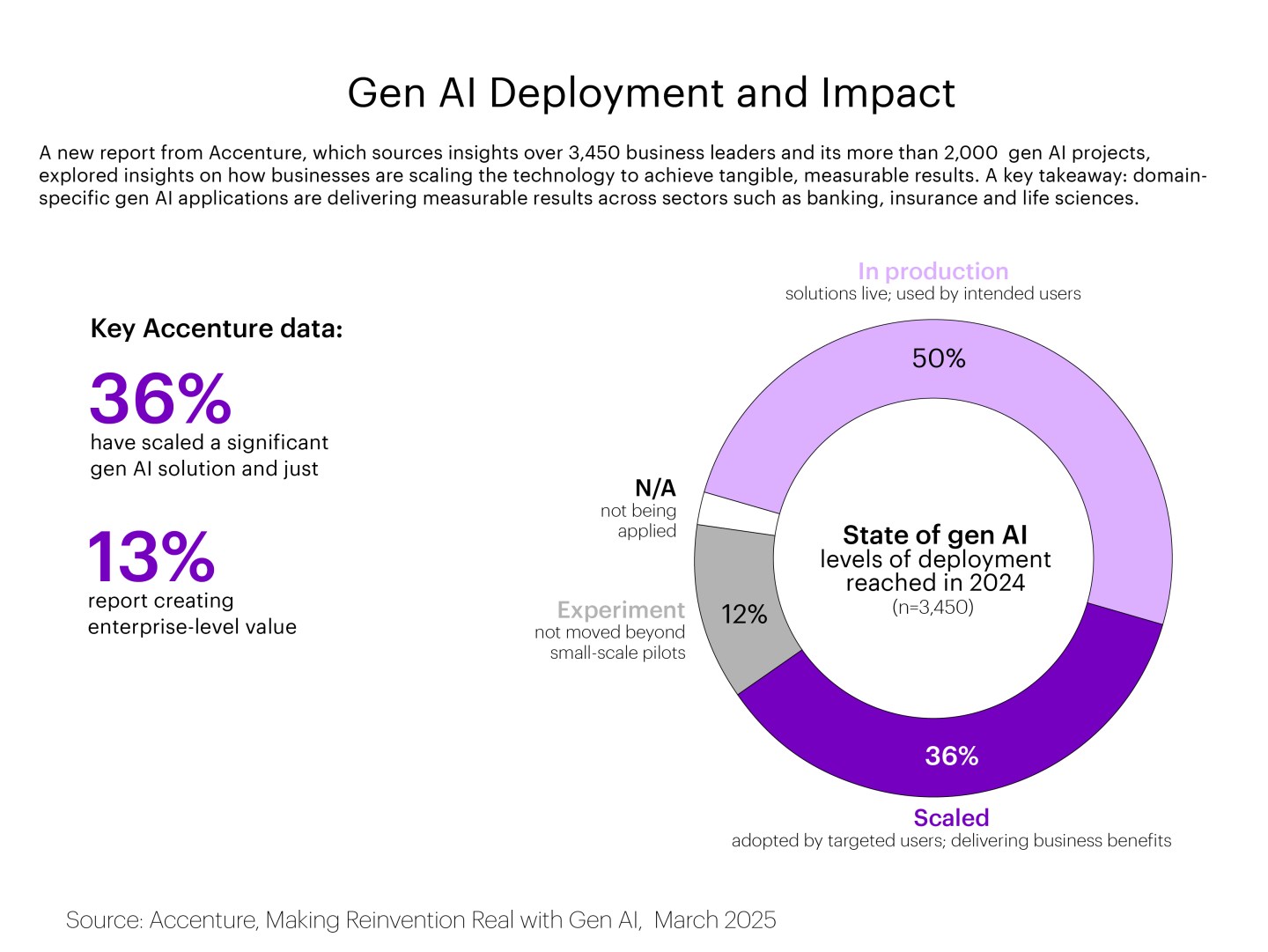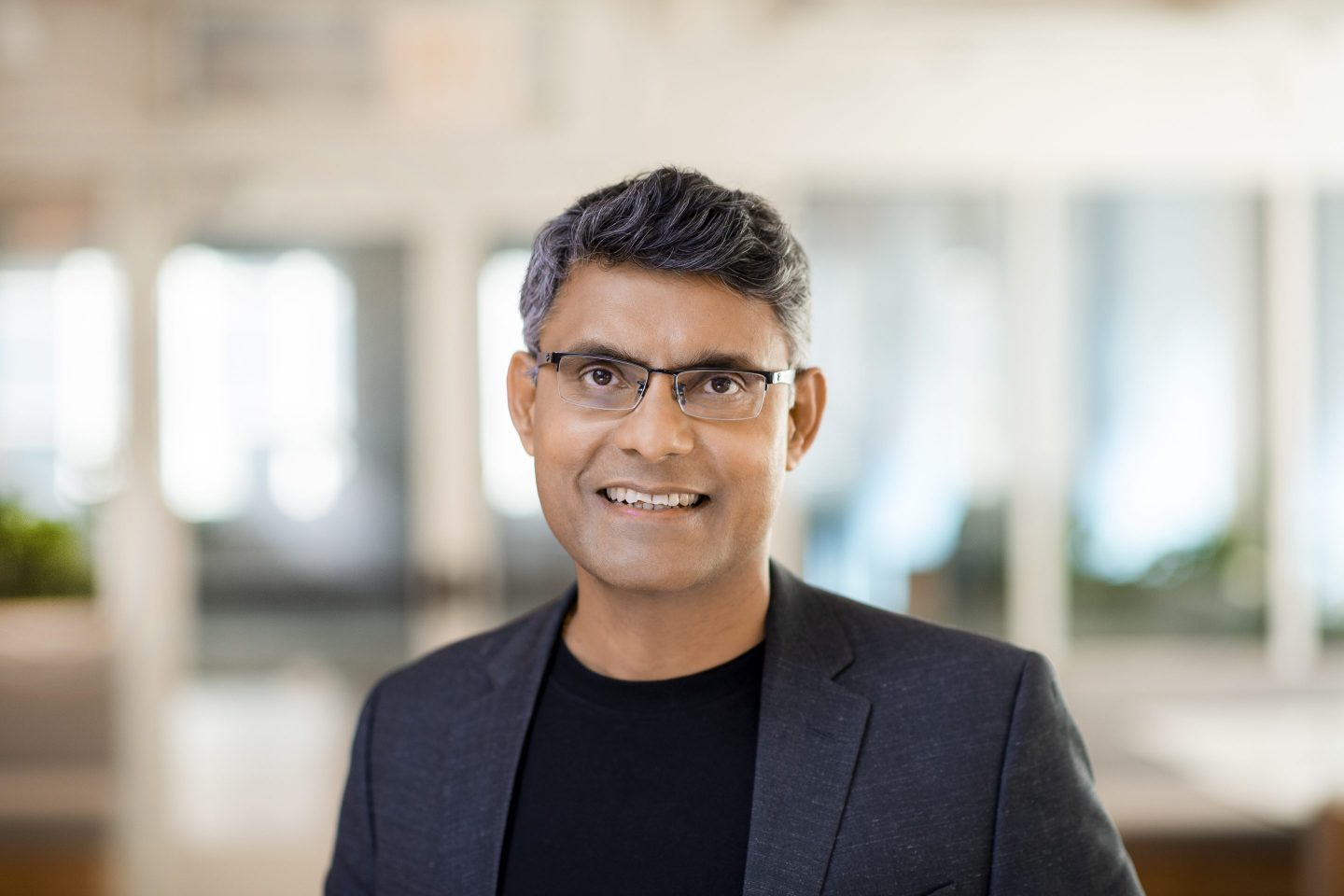Sastry Durvasula says he relishes the challenges legacy companies face implementing new technologies like artificial intelligence and cloud computing.
“My ‘brand’ is that I love transforming these 100-year-old iconic companies with the power of technology,” says Durvasula, chief operating, information and digital officer at 107-year-old financial giant TIAA.
During his career, which also included stints at American Express, insurance brokerage and consulting company Marsh McLennan, and consulting firm McKinsey, Durvasula sometimes contemplated switching to a pure-play tech company. The feeling was especially strong during Silicon Valley boom cycles, so he could learn more about innovation like blockchain and social media. But ultimately, Durvasula decided to stay with legacy, multinational businesses to help them modernize their payments processing and bring their businesses into the digital age.
He joined TIAA, ranked 96th on the Fortune 500, a little over three years ago initially to oversee the company’s client services and technology organization. Within a couple months, it underwent a reorganization in which business-facing CIOs were also given responsibility for all of the technology supporting retirement services, wealth management, and asset management. Previously, there was no single tech leader with such broad oversight.
The new CIO leadership team includes a mix of internal candidates who were promoted to those roles and external recruits. Durvasula also lured talent externally to oversee shared services within the company like cybersecurity and AI.
Early in his tenure at TIAA, Durvasula forged a partnership with Google to bring AI to his company’s customer service centers, deployed new machine learning techniques in asset management, and built a more centralized data foundation. “When it comes to data and AI, there’s disproportionate attention towards generative AI,” says Durvasula.
That includes the creation of TIAA gAIt, a proprietary AI tech platform that lets users match a variety of large language models to the desired use case. LLMs from OpenAI, Anthropic, and Meta are among the options. TIAA has also deployed an AI assistant, which Durvasula calls a “research buddy,” that helps employees in asset management research and comb through quarterly earnings and investor relations documents.
The TIAA gAIt also has an external use case, letting clients ask questions about their different retirement accounts and receive generative AI-crafted responses that have less financial jargon. The assistant pulls information from multiple company sources, including the think tank TIAA Institute.
Humans are in the loop to test for bias, privacy, security, and prevent hallucinations. TIAA deploys hallucination mitigation agents, which cross-validate generated content against trusted datasets to filter out fabricated responses. The company also uses retrieval-augmented generation, which integrates both external and internal data sources using pre-approved retrieval pipelines, in an effort to enhance accuracy and reduce hallucinations.
Durvasula’s next rollout is what he calls “my gAIt,” which will give all TIAA employees access to generative AI. Testing is already underway, and the hope is that workers will use it to explore new ways to be productive.
That measured rollout also lets TIAA keep an eye on the expenses that come with generative AI deployment. “CIOs have to be very diligent to understand the total cost,” says Durvasula. “Because there is so much sizzle and less steak people can get carried away.”
He anticipates that immense competition between AI vendors will help lower the cost of AI and that by 2027, businesses like TIAA will have a realistic view of budgeting, similar to how companies track spending for cloud computing, software licenses, and other ongoing expenses.
One more pressing concern for Durvasula is bringing the workforce along as AI proliferates. He says about a third of all workers take a utopian view of AI’s future, another third fear a dystopian, Terminator-esque one, with the rest somewhere in the middle. “Culturally, this is the most complex challenge that any C-suite has to deal with,” says Durvasula.
He offers his own hypothesis about the work AI will ultimately take over and what it will mean to employees. Eighty percent of today’s jobs will see 20% of their workflows disrupted by AI. The remaining 20% of jobs will see a much-more dramatic 80% impact from AI. With that expected turbulence ahead, TIAA offers workers AI training to promote upskilling.
“Whether you like it or not, AI is here to stay,” says Durvasula. “You might as well make the maximum use of it for your job.”
John Kell
Send thoughts or suggestions to CIO Intelligence here.
NEWS PACKETS
IT unemployment rises to the highest level since August. The unemployment rate for IT workers rose nearly half a percentage point in February to 3.3%, according to a review of U.S. Bureau of Labor Statistics data by CompTIA. Employers added an estimated 177,000 tech jobs across all industries last month, though nearly a half million job listings remained active. CompTIA chief research officer Tim Herbert tells CEO Dive that market turmoil was also a factor in the higher national unemployment rate, which rose to 4.1% for all industries, adding that “with many companies taking a wait-and-see approach with uncertainty, increasing in hiring pauses could leave potential tech hires waiting.”
Wayfair lays off 340 tech employees. Wayfair announced it would close a technology development center in Texas and lay off hundreds of workers, which the home goods retailer attributed to the conclusion of a five-year technology modernization effort. With those investments completed, Wayfair says it can streamline the company’s tech operations and will continue to deploy new tools, like generative AI, to boost productivity. The company says it still employs over 2,500 technologists.
ServiceNow to buy Moveworks for $2.85 billion. Cloud-based software provider ServiceNow agreed to pay $2.85 billion in cash and stock for Moveworks. The deal will let ServiceNow combine its own agentic AI and automation capabilities with Moveworks’ AI assistant, Fortune reports. More than 90% of the customers that use Moveworks’ AI assistant have rolled it out across their entire workforce, an adoption rate that ServiceNow found attractive. ServiceNow says that the combined companies will offer “a powerful universal AI assistant, along with more perceptive AI-based enterprise search to find answers to requests, automate and complete everyday tasks, and increase productivity.”
Microsoft creates AI models it believes can rival OpenAI. New AI models Microsoft is developing are competitive with rivals from OpenAI and Anthropic, based on benchmark testing, Bloomberg and other media outlets have reported. Microsoft has reportedly been testing how the models perform tasks, including powering Copilot-branded AI assistants. The tech giant is also developing so-called reasoning models, or specialized language models that can break down complex problems into smaller steps and solve them through logical reasoning. The new Microsoft models could lessen the tech giant’s reliance on OpenAI. The pair most recently renegotiated their deal in January.
ADOPTION CURVE
Technologists may need to invest more in people to unlock AI’s ROI. Advancements in generative AI—including agentic AI and small language models that can be fine tuned for specific industries like finance or healthcare—have made C-suiters practically giddy. Eighty-three percent of executives believe that gen AI’s potential to improve business exceeded their initial expectations, according to a recent survey by Accenture of more than 3,400 leaders.
But many are still struggling with deployment. The research analyzed more than 2,000 generative AI projects by Accenture’s clients and found that only 36% of executives say they’ve significantly expanded them. And a mere 13% say the projects have created “significant enterprise-level value.”
The biggest barrier, Accenture says, is talent. Only 35% of executives say they have a roadmap to guide how they’ll reshape their AI-enabled workforce. Accenture also says companies are spending three times more on technology than people. But perhaps CIOs and other technologists should rethink that math: The companies that have unlocked value from AI also score 88% higher if they have taken steps to restructure workflows when integrating AI.

JOBS RADAR
Hiring:
- Anthropic is seeking a head of data center infrastructure, based in California. Posted salary range: $450K-$600K/year.
- Emily’s List is seeking a chief digital officer, based in Washington. Posted salary: $200K/year.
- NYC Health + Hospitals is seeking a deputy CIO, based in New York City. Posted salary range: $295K-$315K/year.
- Centific is seeking a field CTO, based in San Jose, Calif. Posted salary range: $180K-$220K/year.
Hired:
- Cboe Global Markets announced Tim Lipscomb will retain his role as CTO but will be promoted to EVP from SVP and also become a new member of the company’s executive leadership team. Lipscomb initially joined the derivatives and securities exchange network in 2019 as chief operating officer of Cboe’s European business. He also previously spent 20 years at Bank of America.
- Nissan Motor named a new CEO and made several other changes to the beleaguered Japanese automaker’s senior management team, including elevating Eiichi Akashi to the role of CTO. Akashi joined Nissan in 1990 and has held various leadership roles, including most recently corporate VP of the vehicle planning and vehicle component engineering division.
- Academy Sports + Outdoors appointed Sumit Anand to EVP and CIO, where he will oversee all enterprise technology operations including cybersecurity, IT infrastructure and operations, and IT shared services. Prior to joining the sporting goods retailer, Anand was CIO at home decor retailer At Home and was previously SVP of business and technology transformation at Signet Jewelers.
- Nano Nuclear Energy named Florent Heidet as its CTO and head of reactor development, after previously serving as head of engineering at Ultra Safe Nuclear, where he led a team of over 100. Prior to that, Heidet spent 12 years at Argonne National Laboratory. At Nano Nuclear, Heidet will oversee the company’s reactor projects and all other technologies in development.
- Apollo announced Gina Gill as CIO, effective in March, and reporting to CEO David Ibeson. Gill joins the London-based insurance company from the U.K. government’s Cabinet Office, where she served as interim chief strategy officer. Gill also was previously chief digital and information officer at the Ministry of Justice and worked at Barclays Capital and Lloyds Banking Group.
- Independence Pet Holdings appointed Munir Hafez as CTO, joining the pet insurance provider after most recently serving as CIO at credit reporting agency TransUnion. Hafez began his career as a software developer at Siemens and has held leadership roles at Harris, PwC, Deloitte, and EY.
- Ionetic announced Stephen Boulter has joined the U.K.-based electric vehicle battery pack developer as CTO, joining from battery manufacturer Agratas, where he served as VP of product engineering. Previously, Boulter spent 16 years at automobile manufacturer Jaguar Land Rover, where he held various leadership roles including head of advanced battery development.
- WorkWave named John Phelan as CTO, joining the software company after most recently serving as EVP and CTO at Hyland Software. Phelan spent over 25 years working at Hyland, beginning as a test engineer and ascending to various leadership roles including CIO and chief product and technology officer.












